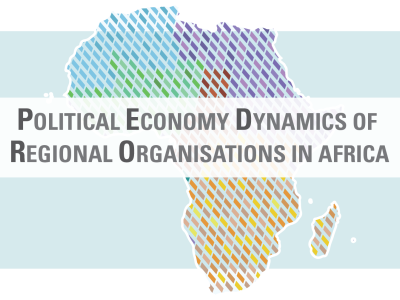
More Effective and Efficient Public Expenditure – Volume 1, Issue 3 (May 2012)
Editorial
By ECDPM and the OECD Development Centre
In the current economic context, marked in particular by the continuing global financial crisis, the issue of domestic resource mobilisation (DRM) has received increasing attention from developing country governments and donors alike. The ...
Unlocking private finance for Africa’s infrastructure development: Tips and Traps
By Melissa Dalleau
Addressing Africa’s infrastructure deficit has gradually become a national, regional and continental priority. For proof, one just has to look at the recent approval of the Programme for ...
Domestic Resource Mobilisation: From Taxes to Spending
By Jon Lomoy and Mario Pezzini
The 2010 OECD Global Forum on Development discussed the challenges of domestic resource mobilization in developing countries and aimed to reverse an era of neglect of tax as a development catalyst. In 2012, the focus of the Global Forum ...
Reflections on Changing Development Fiscal Strategies Over Time
By Vito Tanzi
Views on the government’s role in economic development have changed dramatically over the past 60 years. In the late 1940s and 1950s the United Nations had alerted the world ...
Global Development Agenda and the Least Developed Countries
By Gyan Chandra Acharya
Many of the noble ideas on promoting effectiveness of development cooperation have been initiated and analyzed by the OECD, which has created positive impact on the ground ...
Asia’s Infrastructure: Right Investments with the Right Partners
By Woochong Um
The Asian Development Bank (ADB) has been in the business of reducing poverty in the Asia and Pacific region for the past 46 years. ADB takes great pride in delivering the most ...
Strengthening the Capacity of Supreme Audit Institutions
By Jørgen Kosmo
Supreme Audit Institutions (SAIs) constitute a key component of accountability and the separation of powers between the executive, legislative and judiciary. Independent, well resourced, multidisciplinary SAIs are uniquely positioned to ...
Reforming Public Expenditure Management in the Philippines
By Florencio Abad
Over the last year, the Philippines appeared to be flush with good news, having made headway in various global economic and governance indices. In 2011 alone, this Southeast Asian ...
Fiscal Sustainability—Lessons and Challenges from the New World
By Vicente Fretes Cibils and Gustavo García Osío
The Latin American and the Caribbean (LAC) region learned its fiscal policy lessons from past mistakes—and it learned them very well. For several decades in late last century, ...
Cash Transfers and Poverty in Latin America
By Nora Lustig
Although in Latin America cash transfers (also called Social Assistance) are still much smaller in scale than in advanced countries, in the last fifteen years they have become quite widespread. At the end of last decade, Brazil, Argentina, ...
Fiscal consolidation in Estonia
By Ivar Sikk
This article provides an overview of the Estonian approach to fiscal responsibility, including societal and political consensus on deficit spending and examples of lessons learned from consolidation process. Estonia has a well-rooted culture ...
Food security plans in Eastern and Southern Africa: COMESA or Tripartite?
By Francesco Rampa and Quentin de Roquefeuil
This article is part of a five part series to share findings from a regional Comprehensive Africa Agriculture Development Programme (CAADP) mapping exercise undertaken by ...
--
Monthly Highlights from ECDPM's Talking Points Blog
--
Read GREAT Insights Volume 1, Issue 3



